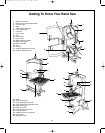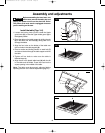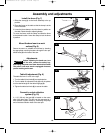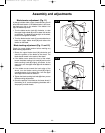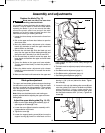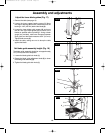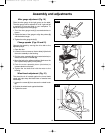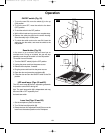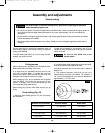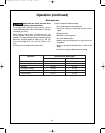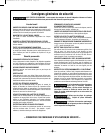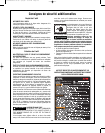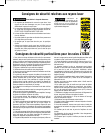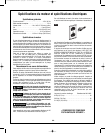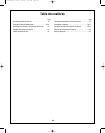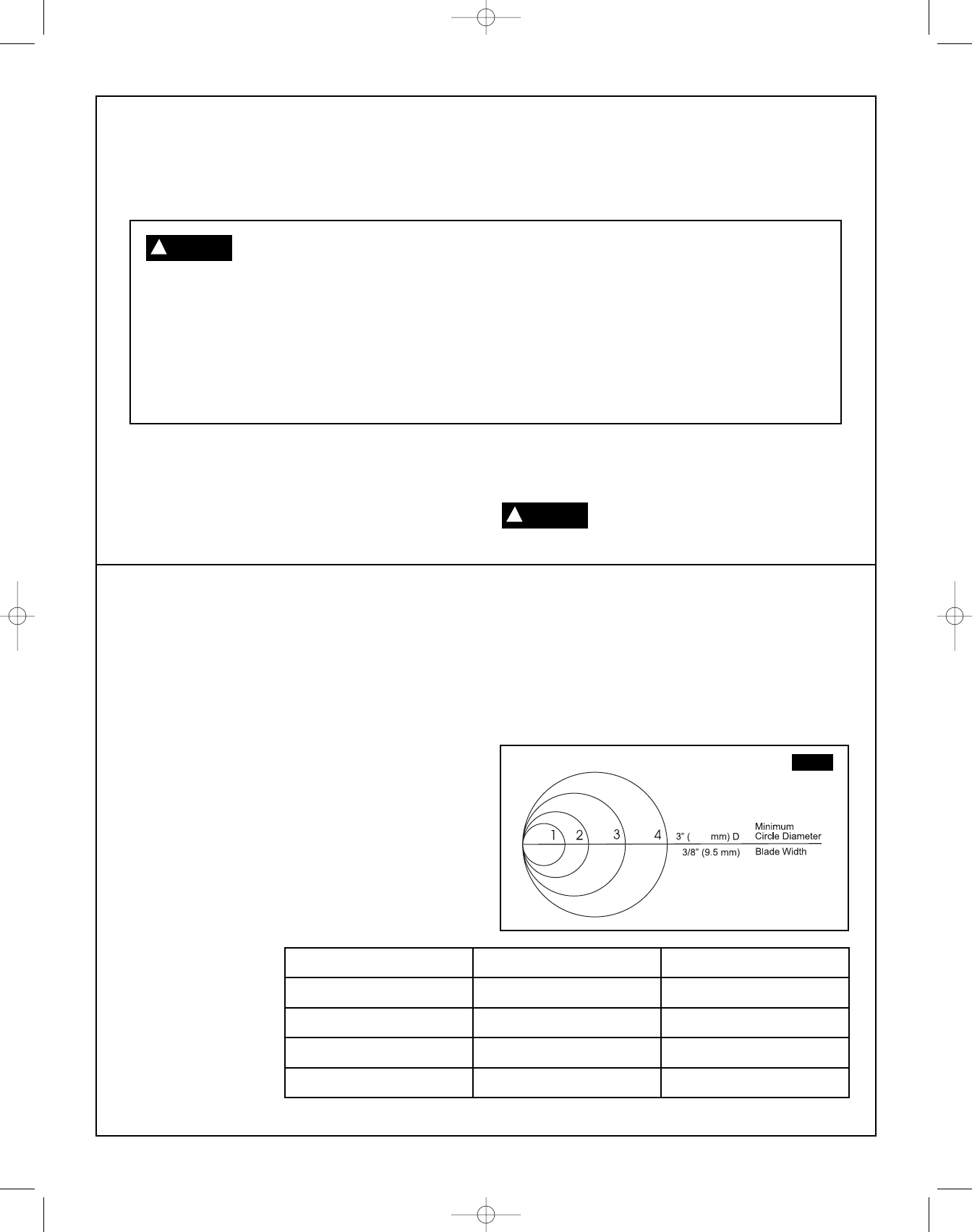
Use the band saw for straight line operations such as
cross-cutting, ripping, miter cutting, beveling, compound
cutting, and resawing.
To avoid twisting the blade, do not turn sharp corners;
instead, saw around corners.
A band saw is basically a “curve-cutting” saw. It is not
capable of doing intricate inside cutting as can be done
with a scroll saw.
Do not use this band saw to cut
ferrous metals.
16.
Assembly and adjustments
U
se scrap lumber to check the settings and to get the feel of operating the band saw
before attempting regular work.
•
Do not turn the power on before all adjustments have been made. Check to make sure the upper guide is in
place. Always keep the upper blade guide close to your work, approximately 1/8" (3.2 mm) above the
workpiece.
• Do not force the workpiece against the blade. Light contact permits easier cutting and prevents unwanted
friction and heating of the blade.
• Sharp saw blades need little pressure for cutting. Steadily move the workpiece against the blade without
forcing it.
General cutting
Cutting curves
When cutting curves, carefully turn the workpiece so the
blade follows without twisting. If the curve
is so sharp that you repeatedly back up and cut new
kerf, use a narrower blade, or a blade with more set
(teeth further apart). When a blade has more set, the
workpiece turns easier but the cut is rougher.
When changing a cut, do not withdraw the workpiece
from the blade. The blade may get drawn off the
wheels. To change a cut, turn the workpiece and saw
out through the scrap material area.
When cutting long curves, make relief cuts as you go
along.
Circle cutting (Fig. 24)
1. Adjust the upper blade guard to 1/8" (3.2 mm) above
the workpiece.
2. Use both hands while feeding the work into the blade.
Hold the workpiece firmly against the table.
Use gentle pressure. Do not force the work, allow the
blade to cut.
3. The smallest diameter circle that can be cut is
determined by the width of the blade. For example, a
1/4" (6.4 mm) wide blade will cut a minimum diameter of
approximately 1 1/2" (38.1 mm).
76.2
FIG. 24
WARNING
!
WARNING
!
Minimum Circle Diameter Minimum Radius Blade Width
1 1/2” (12.7 mm) 1/4” (6.4 mm) 1/8” (3 mm)
2 1” (25.4 mm) 1/2” (12.7 mm) 3/16” (4.7 mm)
3 1-1/2” (38.1 mm) 3/4” (19.05 mm) 1/4” (6.4 mm)
4 3” (76.2 mm) 1-1/2” (38.1 mm) 3/8” (9.5 mm)
SM 2610957105 05-08 6/5/08 7:39 AM Page 16



